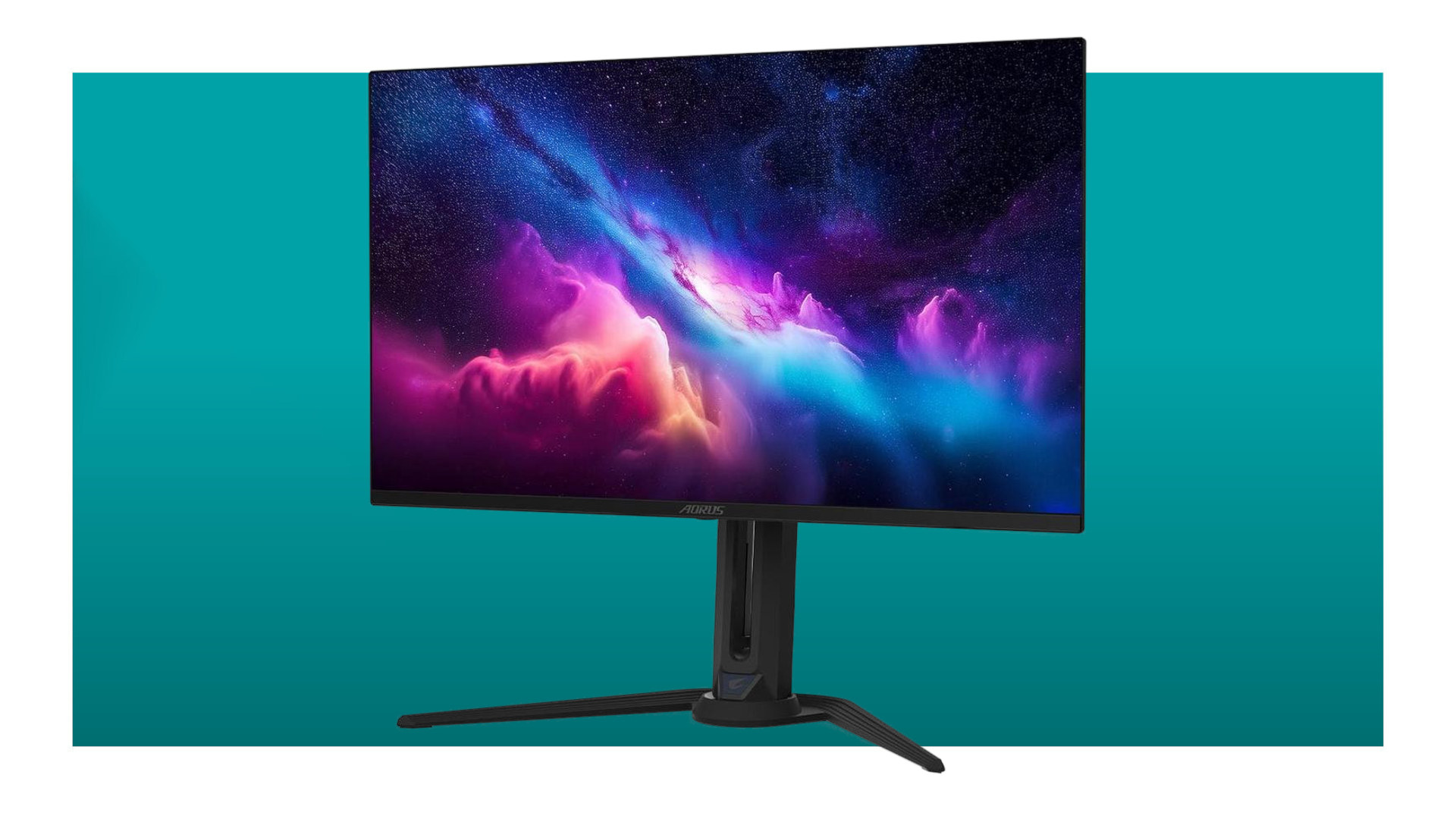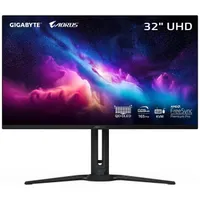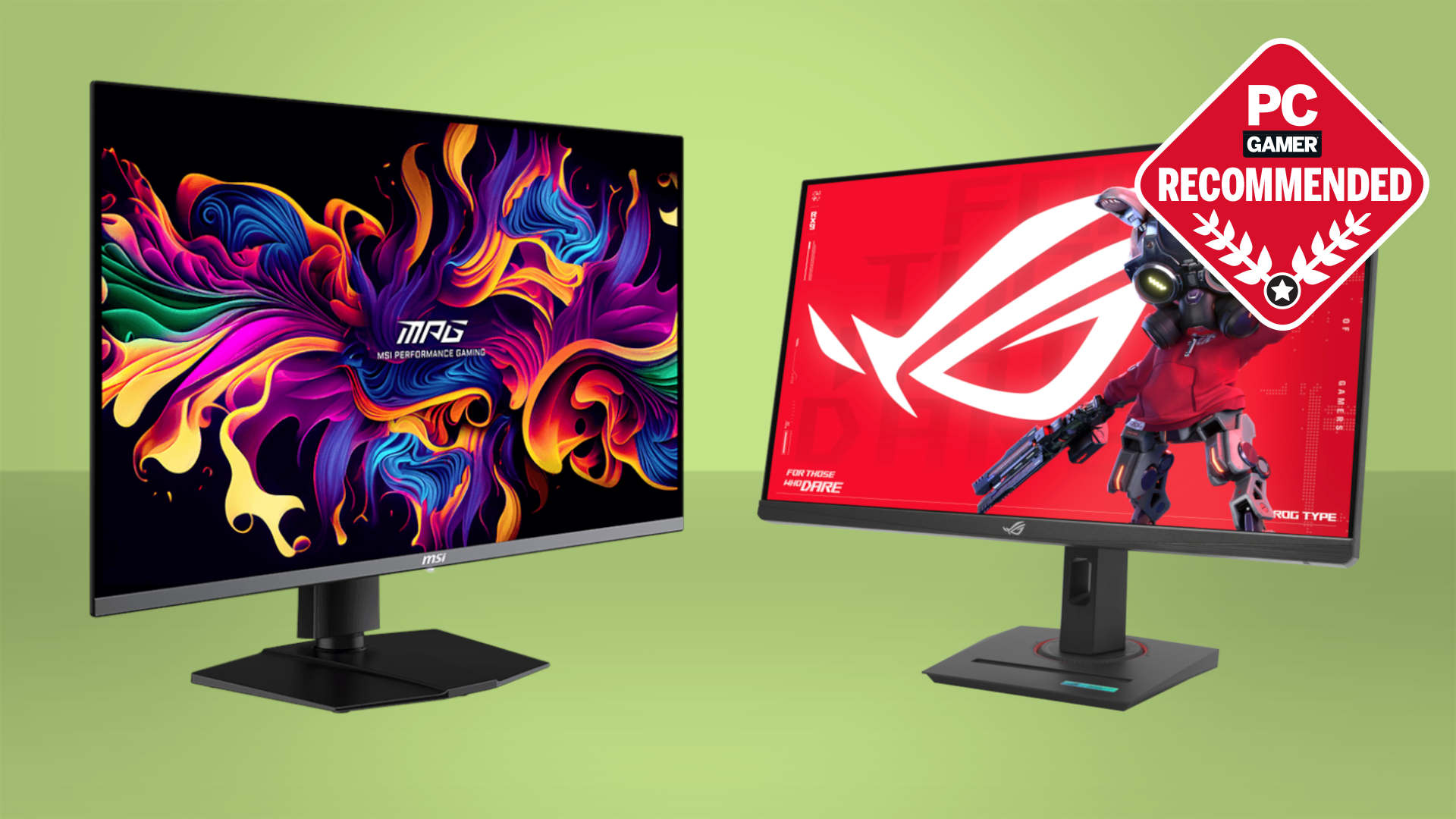Enter the glorious world of true HDR gaming with this massive 32-inch 4K OLED gaming monitor, now $710
Once you've gone OLED for gaming, there's no going back.

Gigabyte Aorus FO32U | 31.5-inch | 4K | 16:9 | 165 Hz | QD-OLED | $899.99 $709.99 at Newegg (save $190)
It's not packing the very latest OLED tech nor does it boast an eyeball-shuddering refresh rate, but it's still more than good enough for sumptuous 4K gaming. Big, bold, and beautiful.
Price check: Amazon $775.99
As a recent convert to the world of OLED gaming monitors, I only have one thing to say—I wish I'd done it years ago. Sure, they're not the best for productivity and big OLED screens use a lot of power, but once you've sampled proper HDR rendering in the latest games, nothing else will ever be as good.
However, the reason why I didn't make the jump from IPS to OLED in the past was down to the terrifying price tags that every 4K OLED screen seems to have. Enter stage left, this Gigabyte Aorus FO32U, now just $710 at Newegg.
Sure, that's still a lot of money to spend on a display but if you have a suitably powerful graphics card to drive all those pixels (at 4K, you're looking at nearly 8.3 million of the little zingers), it's the perfect partner for a high-end gaming PC. And in the case of this OLED display, it's not just about the sheer size of the panel and how many pixels it hosts.
Nothing beats an OLED for colors, especially when it comes to contrast and high-dynamic range (HDR). That's because there are no backlights to bleed through the screen's edges—OLED pixels generate zero light when they're off. It's not a super bright display, of course, with an average output of 250 nits across the whole screen in SDR mode, and up to 1,000 nits for 3% of the screen in HDR mode.
But that's good enough to earn a DisplayHDR True Black 400 VESA certification and it's honestly way better than you think it's going to be.
Naturally, this model does have some weaknesses against more expensive OLED displays. The maximum refresh rate is only 165 Hz but anything more than this is a diminishing return, and you're not going to be left wanting. In terms of inputs, you get one DisplayPort 1.4 socket and two HDMI 2.1 ports, whereas the latest monitors sport DP 2.1 though you don't really need it at 165 Hz—just stick to the HDMI ports and you'll be fine.
And as always with OLEDs, there's the ever-present risk of pixel burn-in, where prolonged static images on the screen end up sticking around in the background. Fortunately, the Aorus FO32U, like all new OLED displays, uses a gamut of tricks and techniques to minimize the issue.
If you're looking for a huge 4K OLED monitor (and oh boy, is this a big monitor), then you really can't go wrong with this Aorus FO32U. Especially at this price.
Keep up to date with the most important stories and the best deals, as picked by the PC Gamer team.

Nick, gaming, and computers all first met in the early 1980s. After leaving university, he became a physics and IT teacher and started writing about tech in the late 1990s. That resulted in him working with MadOnion to write the help files for 3DMark and PCMark. After a short stint working at Beyond3D.com, Nick joined Futuremark (MadOnion rebranded) full-time, as editor-in-chief for its PC gaming section, YouGamers. After the site shutdown, he became an engineering and computing lecturer for many years, but missed the writing bug. Cue four years at TechSpot.com covering everything and anything to do with tech and PCs. He freely admits to being far too obsessed with GPUs and open-world grindy RPGs, but who isn't these days?
You must confirm your public display name before commenting
Please logout and then login again, you will then be prompted to enter your display name.


